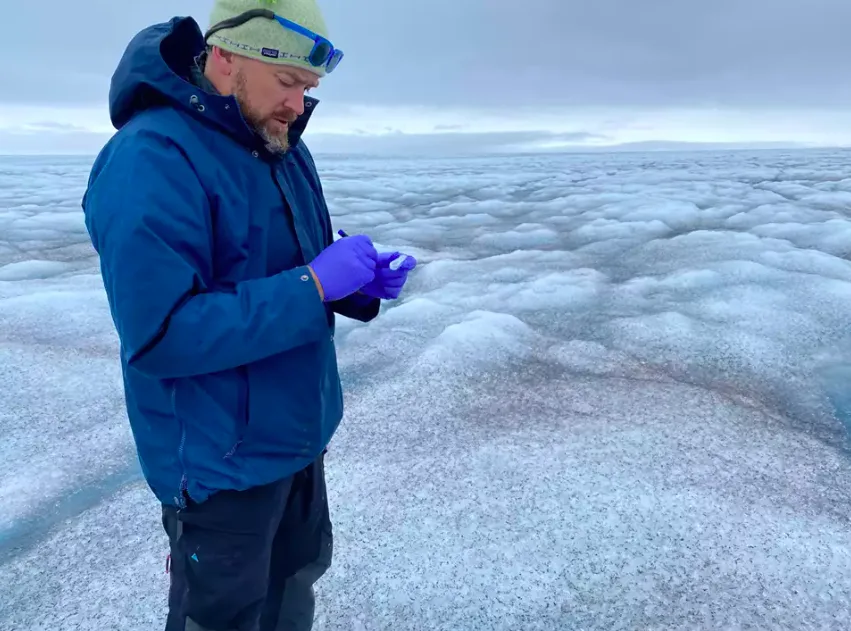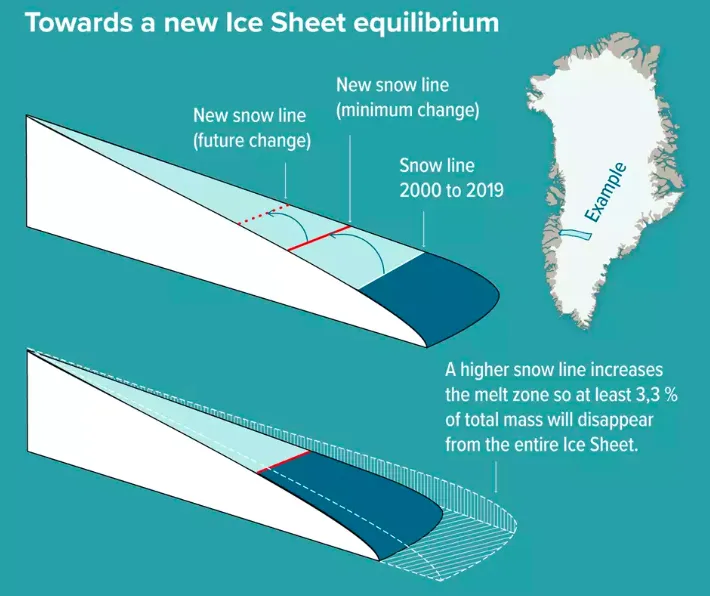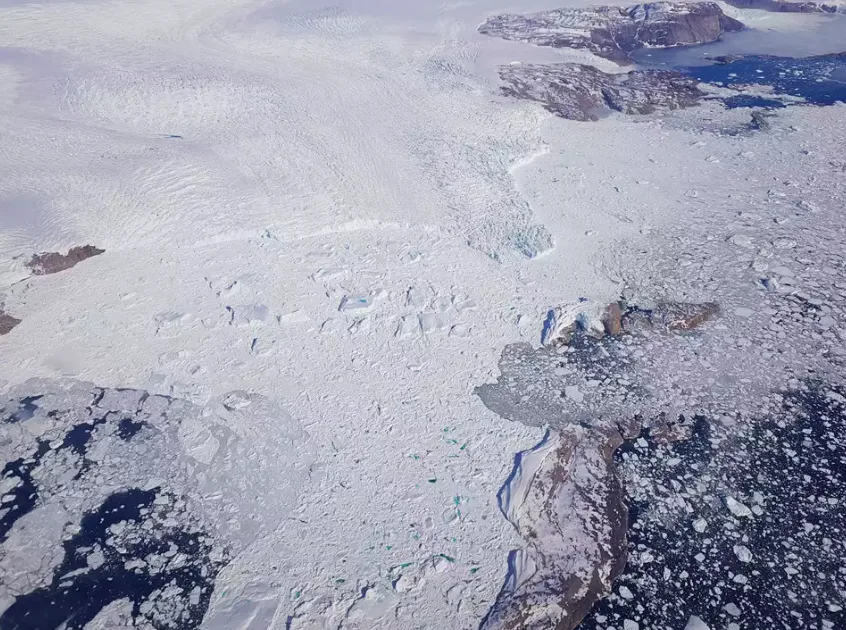
Zombie ice from Greenland could dangerously increase rising sea levels
The zombie ice on the Greenland ice sheet no longer receives snow and “has been consigned to the ocean,” according to a glaciologist involved in the study.
A study from the National Geological Survey of Denmark and Greenland (GEUS) reports that even if the world suddenly stopped releasing all greenhouse gas emissions today, the Greenland ice sheet would still lose 110 trillion tonnes of ice and cause an average global sea level rise of at least 27 centimetres.
That foreboding estimate is just the best-case scenario.
In an interview with The Associated Press, Jason Box, the study’s lead author and a professor from GEUS, said that zombie ice is the culprit and it is “like one foot in the grave” for vulnerable parts of the ice sheet.
“In the foreseeable scenario that global warming will only continue, the contribution of the Greenland ice sheet to sea level rise will only continue increasing. When we take the extreme melt year 2012 and take it as a hypothetical average constant climate later this century, the committed mass loss from the Greenland ice sheet more than doubles to 78 cm,” said Box.

Professor Jason Box taking ice samples standing on exposed ice below the snow line of the Greenland ice sheet in West Greenland during the melt season (The Geological Survey of Denmark and Greenland, GEUS)
The researchers did not factor in the meltwater released from Antarctica or other glaciers in their projections, which means that future sea level rise would likely be far greater than the global estimates in this study.
The method used by researchers to calculate the minimum amount of melting that could occur from the Greenland ice sheet is considered a novelty in the scientific community. The press release notes that eyebrows were raised “by the mere rumour preceding the actual publication of [this] scientific paper.”
The researchers used satellites to record measurements of the ice sheet from 2000-2019 to calculate the amount of mass that has been lost and how imbalanced the ice sheet has become. This is different from other methods that use computer models to simulate ice flow and other climatological factors.
They closely analyzed the snow line, which refers to an area between the part of the ice sheet that melts in the summer and the part that remains frozen due to winter snow resting on top and keeping the ice cool. The snow line can move further up along the ice sheet during a hot summer, which increases the melt area, or it can move downwards closer to the edge of the ocean during colder years.

An illustration explaining the snow line on the Greenland ice sheet. (The Geological Survey of Denmark and Greenland, GEUS)
Ice that is attached to thicker areas of the ice sheet but is no longer receiving snow is considered to be “doomed ice” or “zombie ice.” Without new layers of snow blowing over from colder and thicker areas of the ice sheet, the ice will inevitably melt.
"This ice has been consigned to the ocean, regardless of what climate [emissions] scenario we take now," William Colgan, study co-author and a glaciologist at GEUS, said to The Associated Press.

Part of the Greenland ice sheet terminating in the ocean as a glacier. (Baptiste Vandecrux/ GEUS)
Laws of physics were then applied to understand how the ice sheet would restabilize itself to compensate for the mass loss, which led the researchers to conclude the ice sheet will need to lose at least three per cent of its mass. Box notes a downside to the methodology is there is no timeline for the rate of melting, but said most of the sea level rise as a result of the melt would occur before 2100.
Hundreds of millions of people in global coastal communities are expected to be impacted by rising sea levels, including island nations at or below the current sea level.
Thumbnail image: Large ice sheet reflections from east Greenland on the Arctic Ocean. (Mariusz Kluzniak/ Moment/ Getty Images)












